Hydrangea Color Change: How to Make Hydrangeas Blue
Have you ever had a blue hydrangea turn pink? Here are things you need to know about hydrangea color change so you can keep or change the color of your hydrangea.
A reader emailed me asking why her gorgeous blue mophead hydrangea was turning pink one year after she planted it. This happened with my client’s Endless Summer Hydrangeas, so I knew the answer.
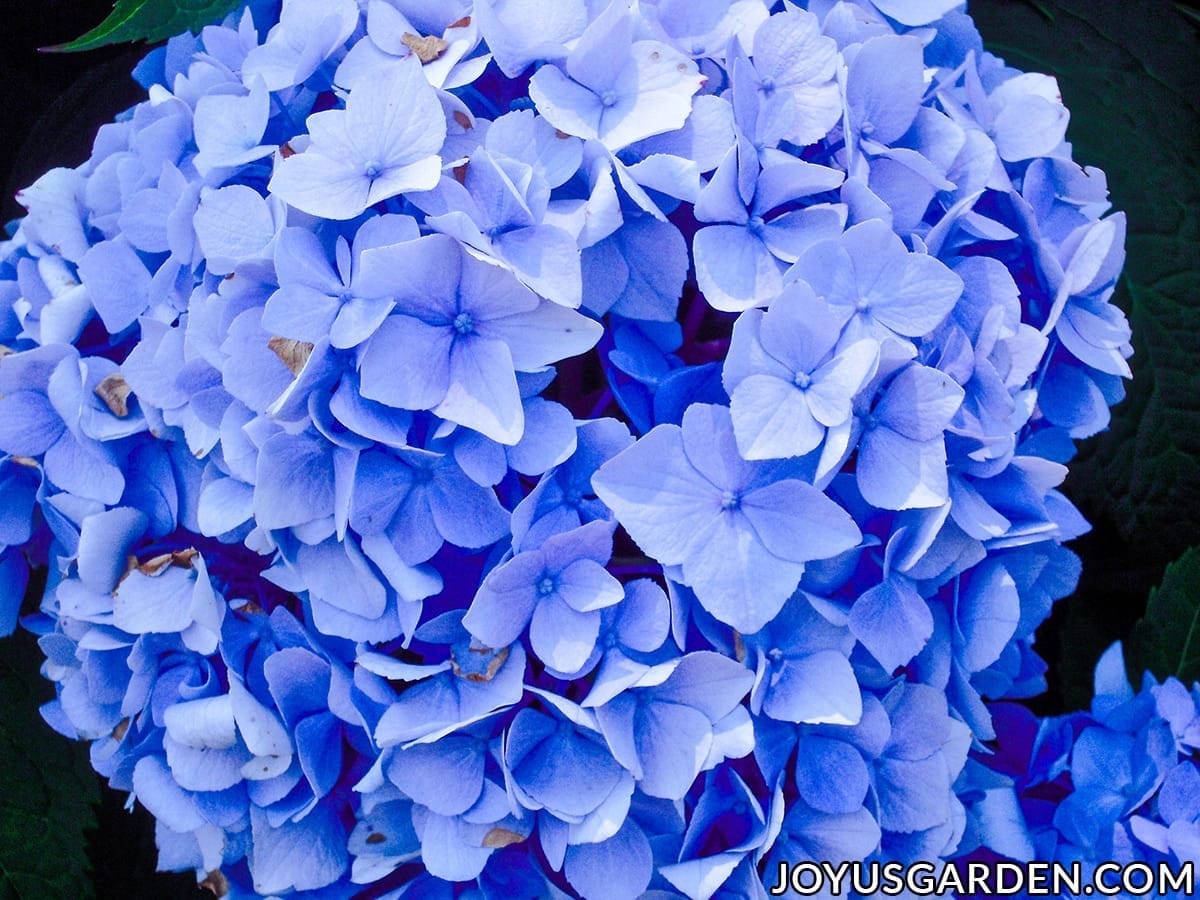
How to Keep or Turn Hydrangeas Blue in Color
I changed the color of my client’s Endless Summer Hydrangea back to blue with a soil acidifier. This product is organic and derived from elemental sulfur and gypsum.
You can purchase the Espoma Organic Soil Acidifier Soil Amendment here.
I worked it into the soil to a depth of around 4” in a circle halfway between the drip line and the base of the plant.
Be sure to follow the directions and use the recommended amount for the size of your hydrangea. You don’t want to overdo it hoping to get a deep blue hydrangea. Even though this is an organic element, you can easily apply too much and/or too often.
Note: You have to focus on the soil. Make sure the soil is moist when applying the acidifier, and water it well when you’re done.
The water is what works it in and makes it effective. If your garden isn’t drip or you don’t get consistent summer rains, water with the hose or a watering can as needed.
A 2 – 3” layer of organic matter, like compost, around the root ball will nourish and help conserve moisture. Hydrangeas aren’t drought-tolerant plants, so you should be watering them anyway!
Applying this is a slow process regarding Hydrangea color change – don’t expect immediate results. However, the results are long-lasting, but the acidifier will need to be applied in the next year and in subsequent years to keep the color blue(ish). It’s not a one-season deal, and your hydrangea stays blue.
I did this three times a year in temperate coastal California because the hydrangeas have a long bloom time and growing season here. If you’re in a cold climate, you may only have to do it two times a year.
Some ask if coffee grounds, Epsom salt, rusty nails, or vinegar can change hydrangea color. I’ve never tried any of these, but the truth is, I don’t know how much, how often, or how effective any of them are.
Important Things To Know About Hydrangea Color Change
- When you plant a blue hydrangea, it’s best to start the flower color-changing or color-keeping treatment at this time.
- One application doesn’t do it. You want to apply a soil acidifier 2-3 times a year. Three applications are optimum in climates with warmer winters and a longer growing season.
- Hydrangeas can transform their color from season to season. You may never know what you’ll get until those blooms open up.
- Turning a pink hydrangea blue is easier than turning a blue hydrangea pink.
- Can you turn white hydrangeas blue? Like a blank canvas, you would think that white flowers (including Pee Gee and Oakleaf Hydrangeas) would easily turn blue. Not so, and don’t bother trying.
- White hydrangeas are unaffected by soil pH. Many don’t change color but might turn greenish as the flowers age.
- I find it easiest to control the soil pH with container-planted hydrangeas. More on this below.
If you’re curious about how to keep pink hydrangea flowers pink, garden lime is what you’ll need to apply to raise the ph levels of the soil. Here are sources for organic lime from Esposa as well as Jobe’s.
What Causes Hydrangea Color Change?
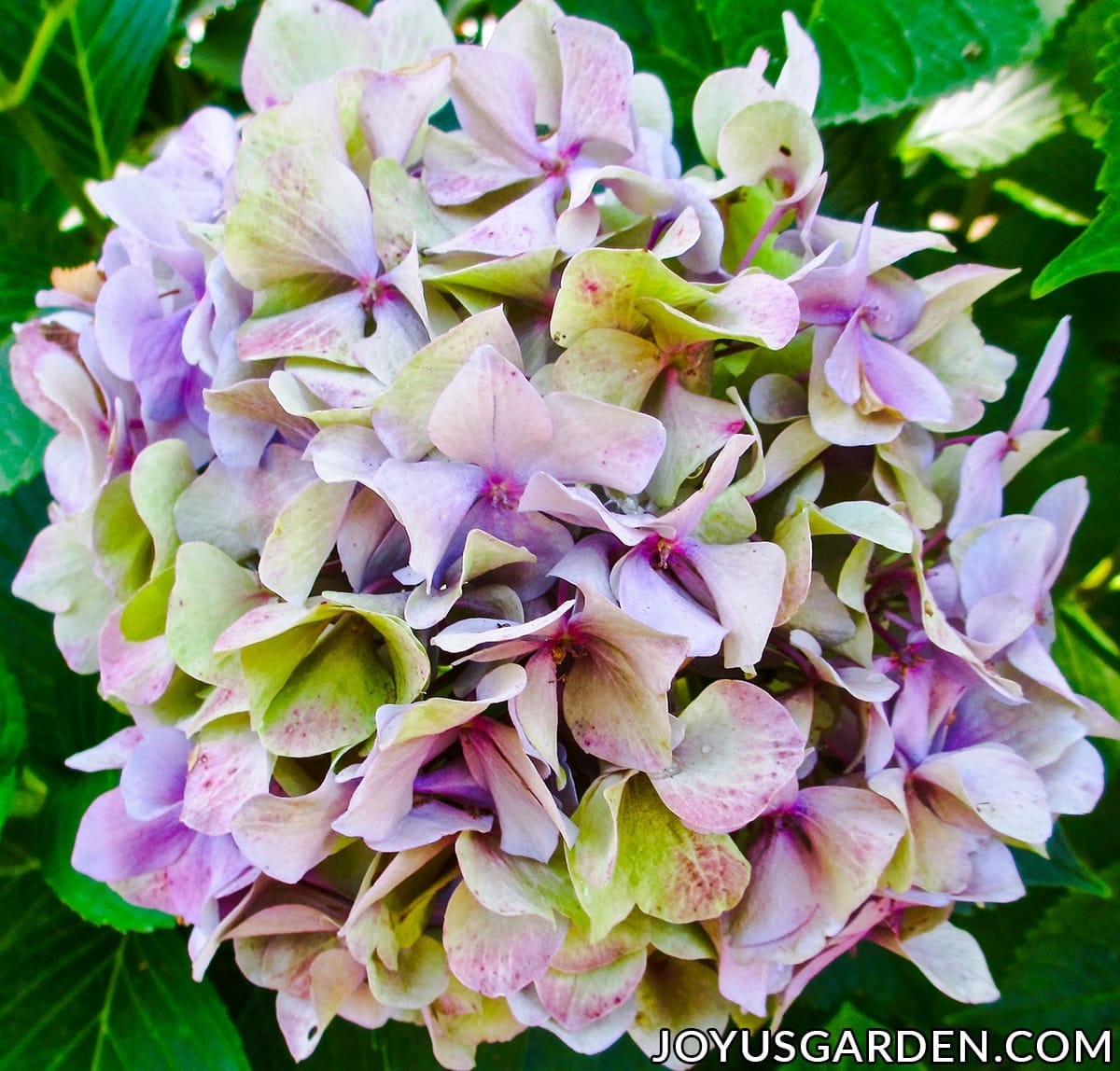
First, hydrangeas prefer and do best in acidic soil, like Rhododendrons, Azaleas, Japanese Maples, Pieris, etc. The change in the color of your hydrangeas is due to the pH of your soil. Soil runs from acidic to alkaline with varying degrees in between.
The health of your plants is dependent on the health of your soil. Hydrangeas color change is affected and determined by the soil pH.
If you have soil on the alkaline side, then your hydrangeas will be pink or pinker. Alkaline soil, with a pH of approximately 7 – 9, generally contains clay. If your soil is more acidic, pH around or less than 5.5, your blue hydrangeas stay blue or bluer.
If you know your soil is more alkaline, you want to apply the garden sulfur or soil acidifier upon planting blue hydrangeas.
Aren’t sure? If you’re uncertain of your soil’s pH, you can find a soil lab in your state or buy a simple soil pH test kit to send off a soil sample. You can also buy a pH meter online.
- Neutral soil: ph around 7
- Acidic soil: ph below 7
- Alkaline soil: ph above 7
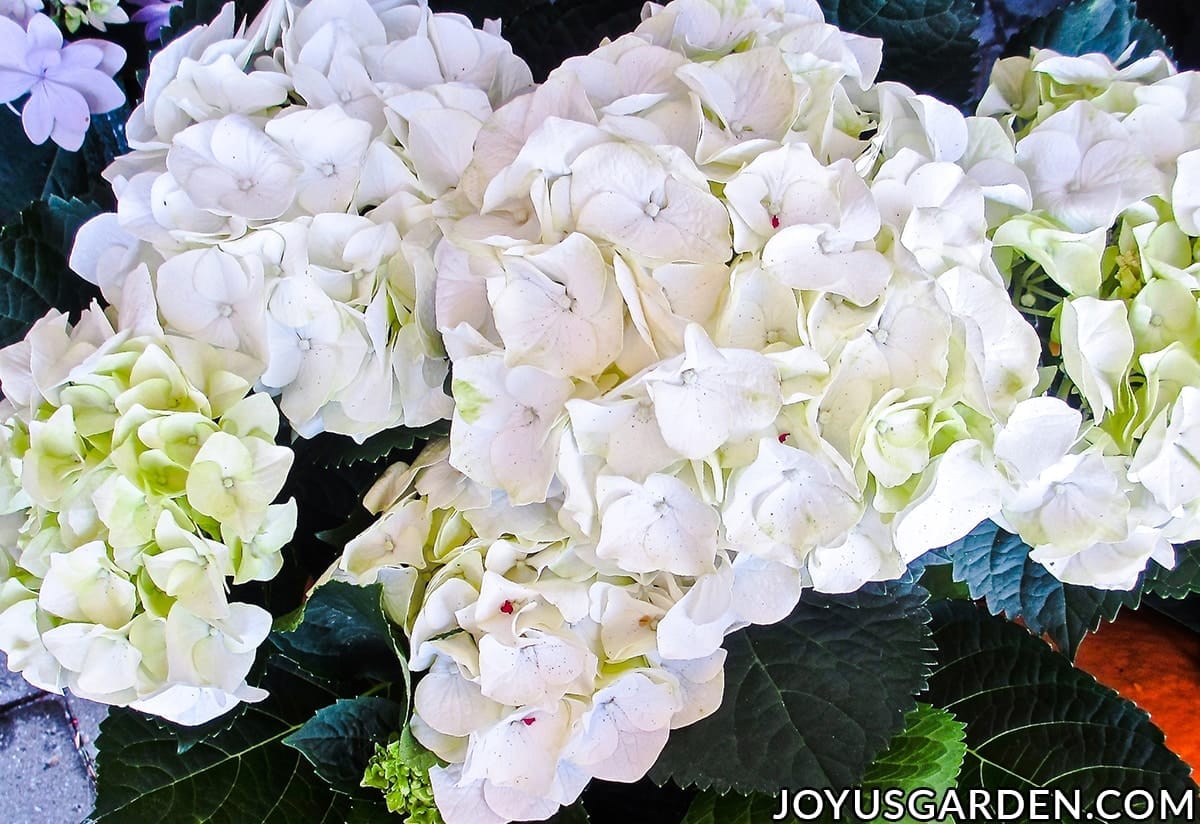
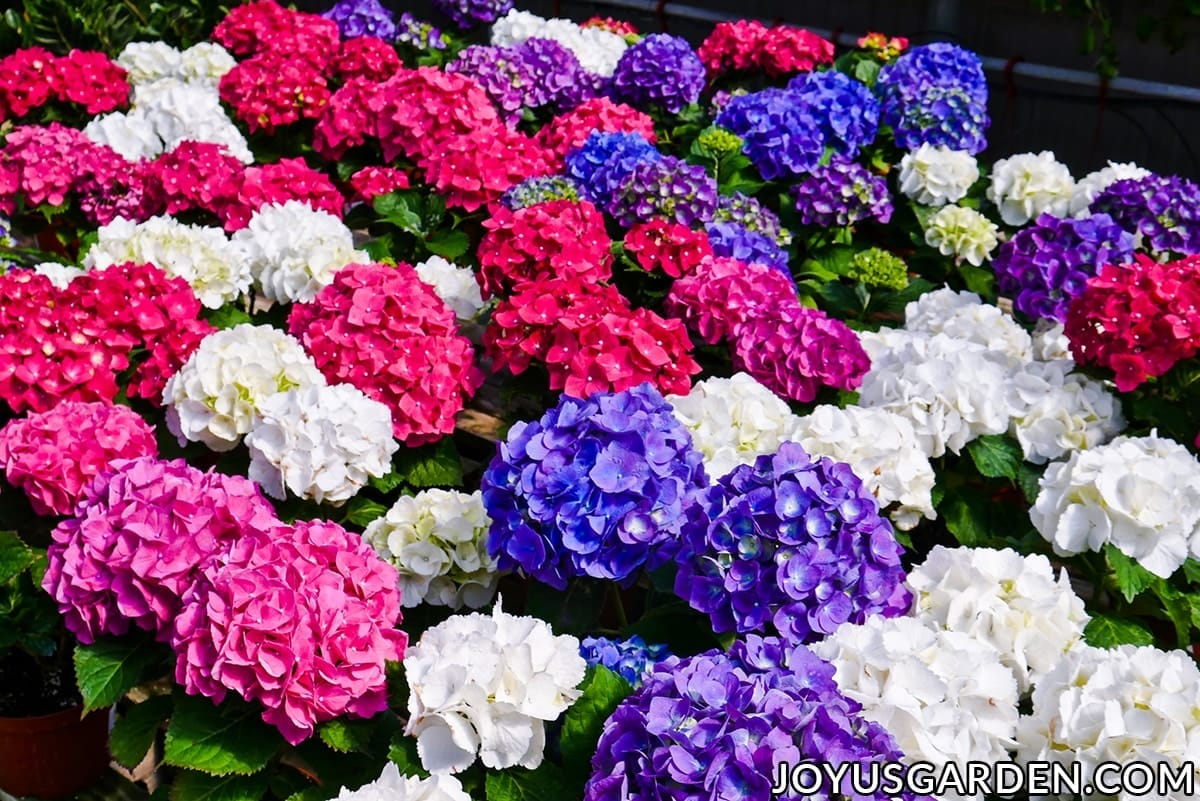
Florist Hydrangeas
Have you ever wondered why florist hydrangeas have such vibrant, deep colors and yours in the garden don’t? It’s because the growers alter the soil mix right from the get-go and throughout the growing process. These small plants are bred to have big blooms to catch our eye!
Hydrangeas In Containers
Changing or keeping the color of hydrangeas in containers is much easier than in the garden. This is because you can plant them in a planting mix formulated for acid-loving plants so the soil pH is lower, to begin with.
Your local landscape company may have a mix formulated for your area. If not, Dr. Earth and Gardener & Bloom make acid-loving mixes which are good options.
And, because the soil is looser than it would be in the garden, applying the soil acidifier is much easier. You may only have to do it once or twice yearly to achieve hydrangea color change in containers.
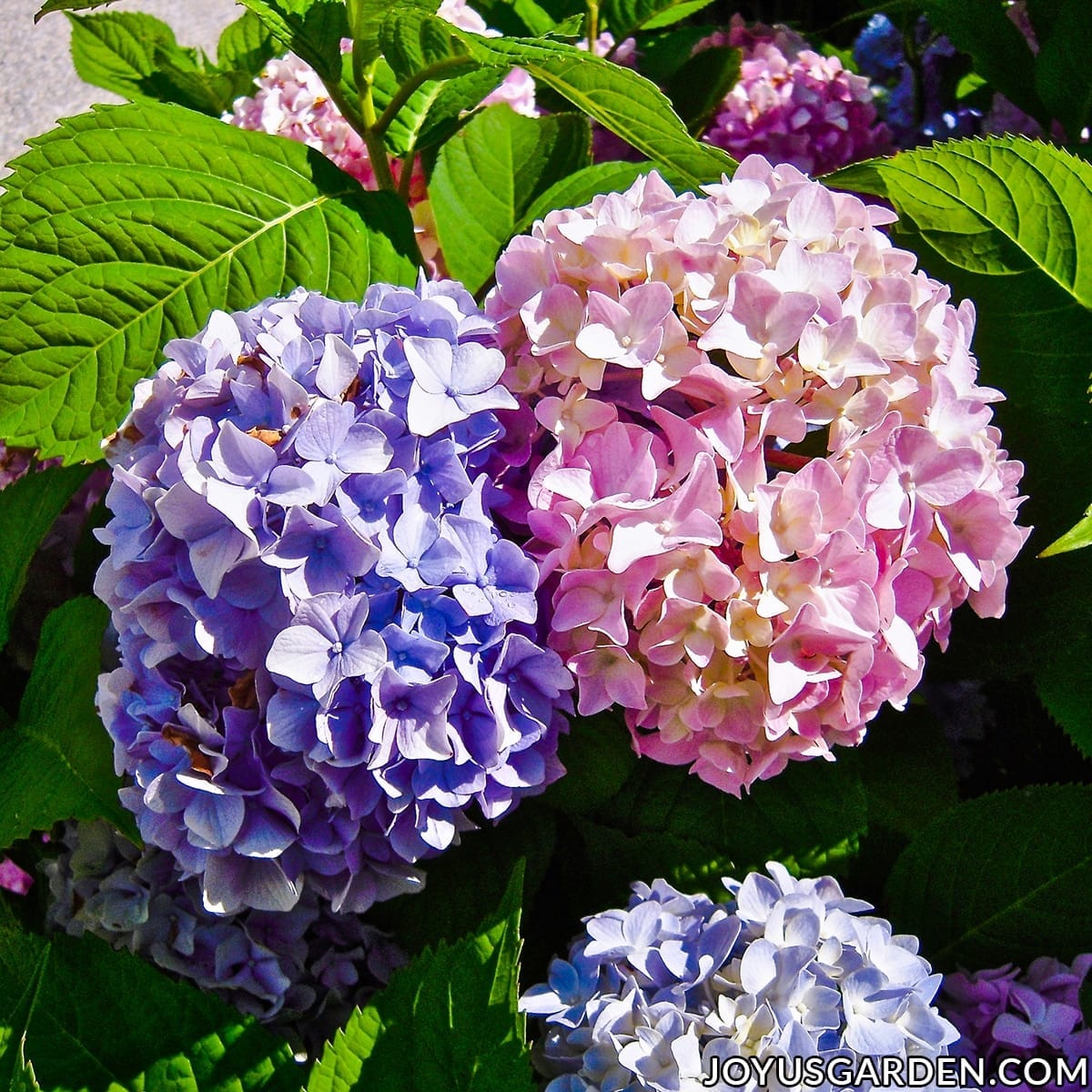
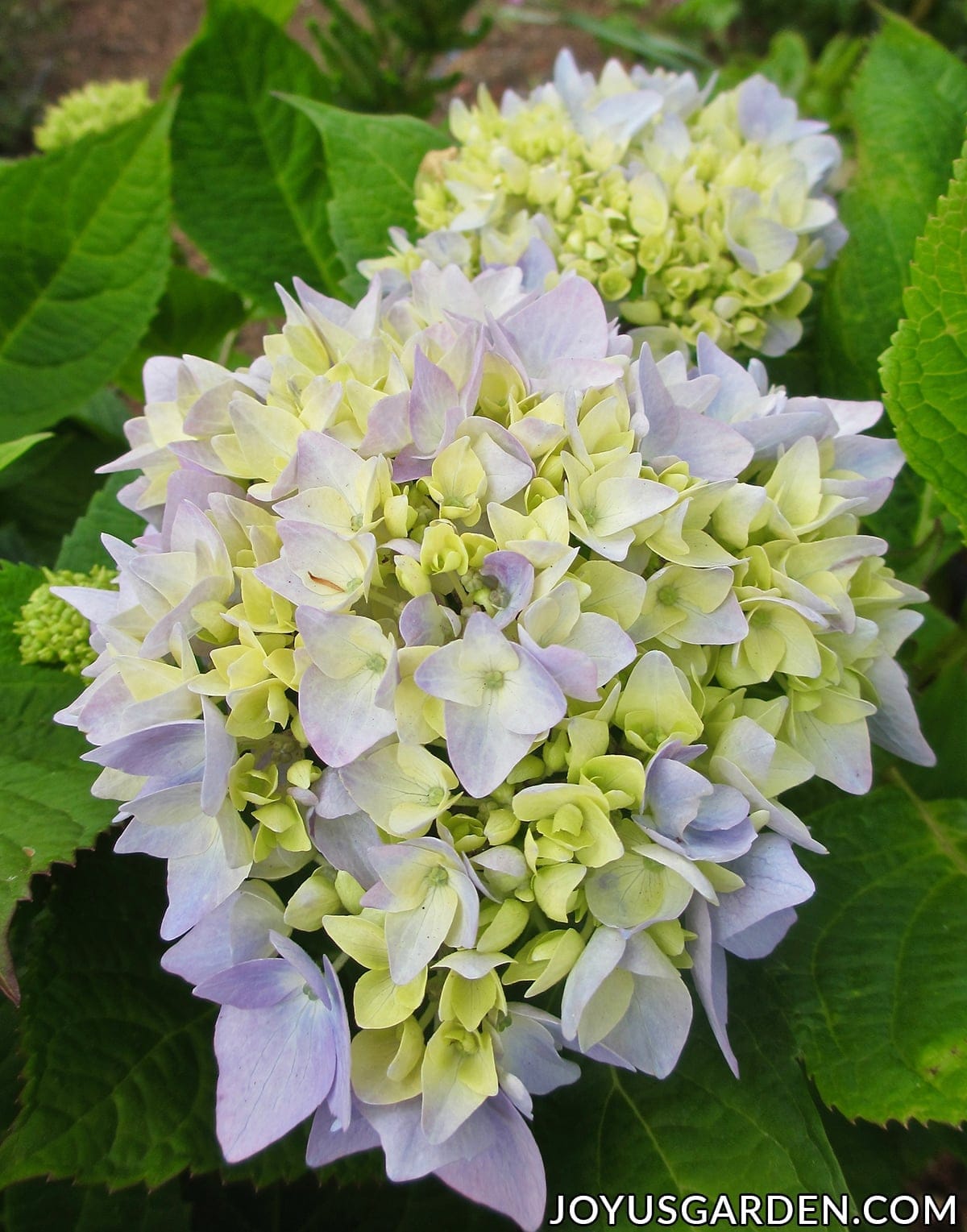
Hydrangea FAQ’s
The ph level of the soil determines the bloom color. If you’re unsure, take a soil test to determine what yours is.
A lower ph means the color of the hydrangea flowers will be more blue. A higher ph means pinker.
Here are more details on soil ph.
The roots have to absorb whatever you’re applying, and the plant has to uptake it.
When I started applying garden sulfur to my client’s endless summer hydrangea in early spring (San Francisco Bay area), it took all season for the flowers to change. After three applications, the flowers turned pale bluish/lavender in September.
It depends on what color you want them to be. What you use is a soil amendment rather than a fertilizer.
How to get pink hydrangeas: depending on your soil’s ph, pink hydrangeas might need dolomitic lime (garden lime) to keep pink flowers. How to get blue hydrangeas: they might need garden sulfur to keep blue flowers.
White hydrangeas stay white no matter what the soil ph levels are.
In my experience, not right away. Hydrangea flower color slowly changes as the soil ph changes.
It depends on the intensity of the sun and the amount of heat.
Most hydrangea plants do best in full sun up to noon or 1, especially if you live in a climate with a good amount of summer sun.
The client I refer to in this post lives south of San Francisco, six blocks from the Pacific Ocean. This is a cooler area with quite a bit of fog. Most of her many hydrangeas grow in full sun and do great. We had hydrangeas growing on our property in Connecticut, and they also did fine in full sun.
The hot afternoon sun will burn a hydrangea in no time. I now live in Tucson, Arizona. I wouldn’t even think of trying a hydrangea here because of the heat, strong sun, and water issues.
Yes, you should. I always did because the plant looks better. Some people leave them on for the winter and prune them off in spring.
I never fertilized hydrangeas when I was a professional gardener. They grew healthy, looked just fine, and bloomed away (although some years heavier than others).
I would apply a good layer of compost from local landscape supply companies every year or two. It not only nourished the plants but helped to conserve moisture.
I’m a big proponent of working with your soil and planting plants appropriate for that soil type. That being said, if you must have blue hydrangeas and your soil is on the alkaline side, have at it with the garden sulfur or another soil acidifier.
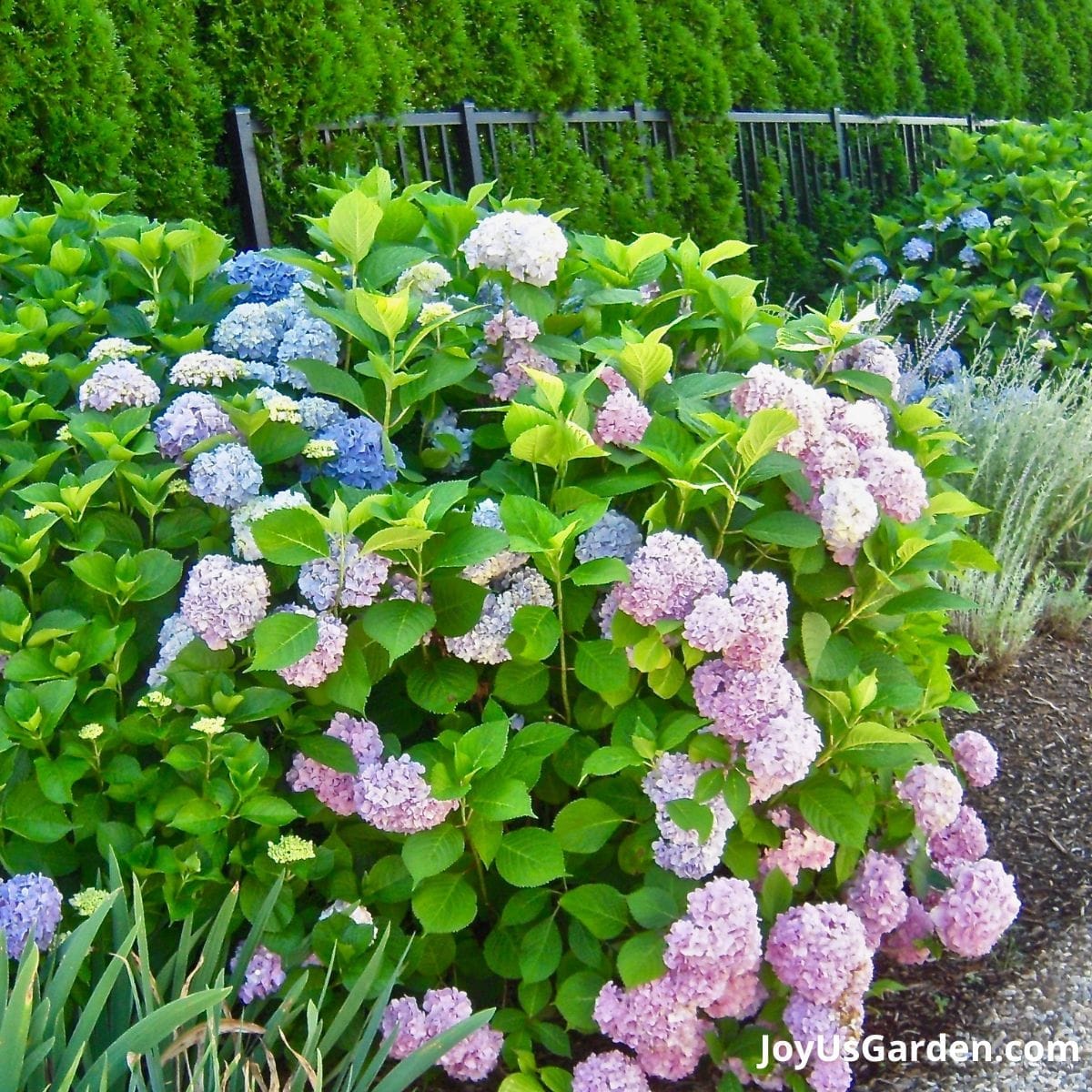
Hydrangea flowers dress to impress and put on quite the summer/fall show in full bloom. They’re one of the most beloved flowering shrubs found in gardens the world over. These fast-growing shrubs have large flowers in various forms, types, and colors. One flower practically makes a whole bouquet!
You may never get the color of your hydrangeas back to that intense blue they were or that you want them to be. In the case of my client’s hydrangea, the flowers turned pale blue and lavender blue.
May your garden stay blue(ish), and let’s appreciate the beauty of these flowers!
Happy Gardening,

Note: This post was previously published on 7/17/2015 & was updated on 3/18/2020 & then again on 6/7/2023.
This post may contain affiliate links, you can read our policies here.


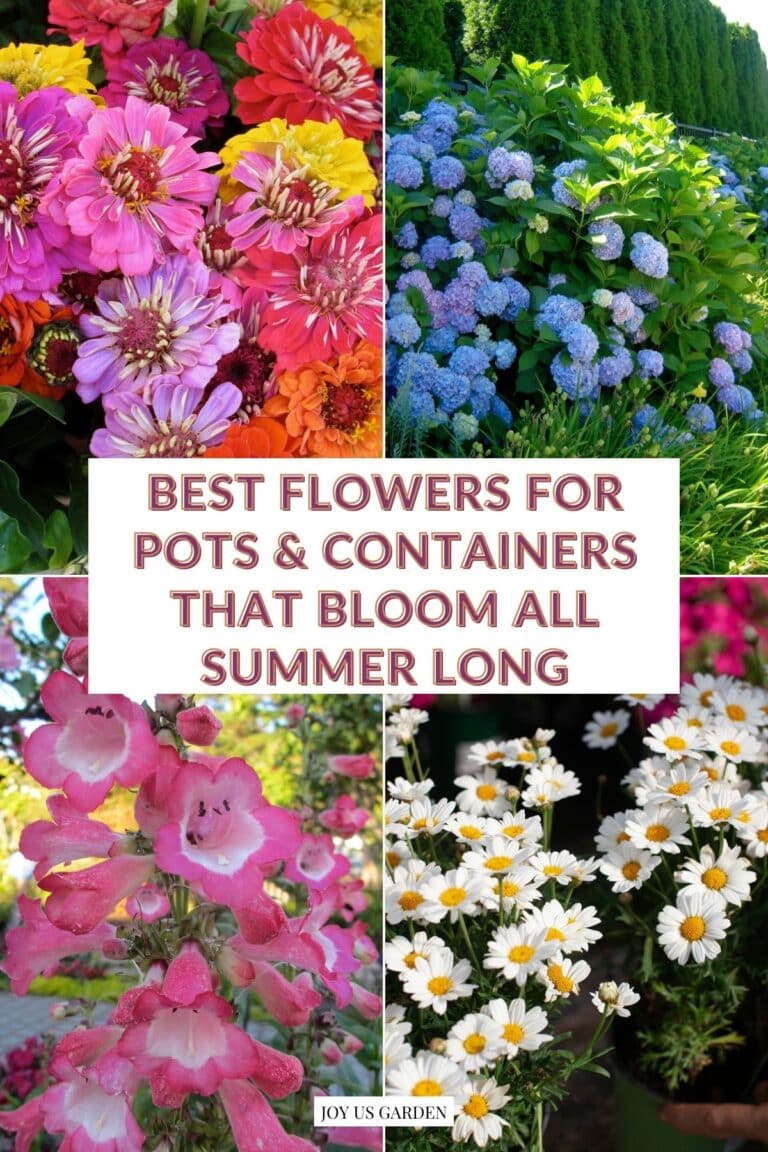
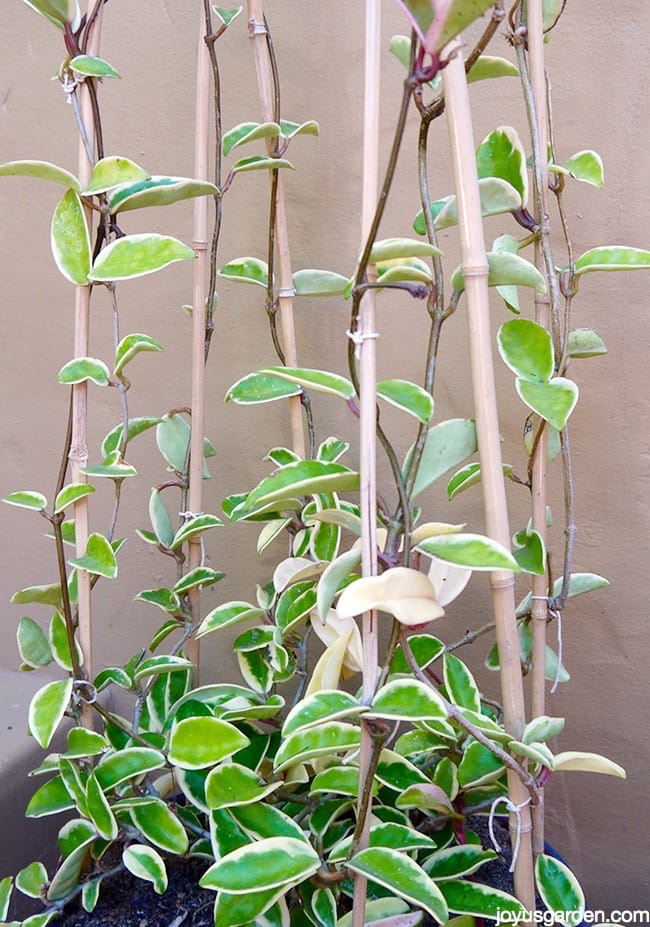


I and my neighbor both have variegated Hydrangeas and they are covered with brown spots. We live in Central Florida and it has been unbelievably hot this summer. They get full sun. After reading your article I guess they are burned. Guess I should move them? Or put them in a pot and change the soil as you mentioned? Thanks for your input and help.
Hi Susan – Although hydrangeas need light to bloom, they will definitely burn in the hot sun. It sounds like burn & you want to keep them well watered. I’d move them to a spot out of the hot afternoon sun. Nell